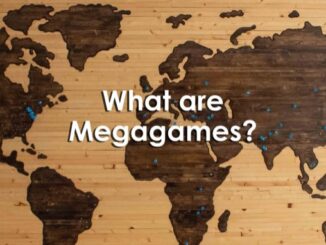
This article was originally published at UniversityXP and is re-published in Ludogogy by permission of the author.
Have you experienced that feeling of triumph before? The one you get from completing a really difficult level or beating an experienced opponent? You know, when you throw your hands up over your head in triumph? That feeling is called fiero. Fiero is highly addictive and highly engaging. Often that feeling comes after we’ve become completely engrossed in the game. That’s called being a state of “flow.”
This post will cover the roles that flow, fiero, and games play in shaping our teaching and learning experiences.
Emotions & Player Experience
Games are experiential. They are about the player’s experience. But not education is the same way. Sometimes when we teach we are highly focused on the instructor, the modality (in person, online, or hybrid), or on the content.
But game designers think of these experiences differently. Game designers pay close attention to the kinds of emotions that games evoke in players. Educators can do the same. However, most of the time, we’re bogged down with meeting learning outcomes, assessments, and other factors that don’t deal directly with our students’ experience.
But what if there was a way for instructors to reach that high level of student engagement? How about a level of engagement so intoxicating and exhilarating that all individuals lose a sense of time and space?
That’s Flow

Flow is that highly engaging and intoxicating experience. It’s that feeling of being “in the zone,” where time seems to become a blur. This completely engrossing experience directly addresses player engagement. Because, for a time, a player is no longer thinking about whether they should be doing something else. Instead, they are concentrating on the game and nothing else.
This level of commitment is called the engagement curve. And it’s an incredibly important consideration for designers. Engagement is critical for educators as well, because focusing on the student experiences means addressing some of the key areas where flow is most likely to occur. That means creating content that has clear goals, established rules, and increasingly challenging levels of difficulty.
I remember my first time engaging in this level of flow playing a game. It was playing SkiFree on my first computer. SkiFree is a game where you represent a skier trying to race down a mountain. But there are trees, rocks, and other obstacles in your way. Famously, there’s also a snow monster that comes out to chase you. All I wanted to do was to get away from that snow monster… To this day I never could.
As educators, we are in an ideal position to identify, direct, and design this flow state for our students. Two of the most important characteristics for flow are already included in class designs: clear goals and feedback. Thankfully classrooms are already places of clear goals and feedback. Right?
Let’s think about that for a moment. What was the last syllabus you read? Were the goals from the class completely clear based on what you read? What about getting feedback from an instructor? Did you get that feedback instantly? Was it immediately useful?
Learning design has a lot to gain from incorporating aspects of flow. The innate feeling of progress, the excitement of moving forward, and the general applicable areas of accomplishing something difficult after investing time and effort are incredible forms of feedback.
And what happens when we accomplish that one seemingly impossible task? We celebrate.
Fire in Fiero
Fiero is that celebration. It is the neurochemical phenomena we feel when we’ve invested time and effort into something through our flow state to achieve something difficult.
Fiero is the Italian word for pride which is used to describe this emotional high. Anytime you’ve beat a really hard boss, found that really rare item, or finally defeated your friends at Mario Kart: you’ve experienced fiero.
The funny thing about fiero is that it’s a common reaction across cultures, borders, boundaries, and people. We like to throw our hands up over our head. It’s often accompanied by loud screams and shouts of triumph. It’s one of the most powerful reactions that we can feel as humans.
Think about the last time you saw a World Cup Soccer match. Player scored a goal? Yeah. That’s fiero.
Combining opportunities for fiero while players engage in a state of flow provides something very addicting and engaging. When players are in this engagement curve they experience an emotional roller coaster. Periods of inactivity, followed by highly engaging activity, followed by moments of triumph or defeat.
It’s that roller coaster of emotions combined with our desire to keep playing that keeps us engaged. That shot of dopamine to the brain when we achieve fiero is highly addictive and something that can be used for design and instruction.
Flow and Fiero

So how does flow and fiero interact and how is it used in design for both games and learning experiences? Fiero is just one aspect of good design and is something that is used to continually engage and entice the player. Too many instances of fiero and the game either becomes too easy or the player is no longer challenged. Too few instances and the game becomes too hard or lacks engagement opportunities.
The roller coaster of moments, the periods of high highs and low lows, is what brings players back into the state of flow. You want to engage them long enough to keep playing but not make the game so easy that it’s no longer challenging.
This is often where you see level design come into play. Players are presented with challenges, opportunities, and structures to surmount them. After a while, they encounter a larger challenge or a “boss” that they must beat in order to progress. Once they do? They progress to a new level with ever increasingly difficult challenges or decisions. The path continues from there.
Those moments when players encounter a boss and triumph? An element of fiero. Those times when students ace a test? Fiero. When tennis players score the match point? Fiero. The time your students win a case study competition? Fiero.
Games and learning are two sides of the same coin. They can be highly engaging experiences ripe for applications of flow and fiero.
Fiero In the Classroom
Games and learning have long been intertwined. That’s because games are great experiential teachers. They are able to autonomously demonstrate and instruct students on how to succeed and progress. Often this is through the discovery of patterns in games that can be capitalized on over time.
But sometimes the most powerful forms of learning are not fun or engaging. Instant gratification is fun. But that’s called easy fun. For role playing games, easy fun is just walking around the world. But other types of engagement like attempting challenges, fighting bosses, or preparing presentations? That’s hard fun. It’s a type of fun gained only through significant effort on the part of the student or player.
Balancing opportunities for easy fun and hard fun is part of the engagement curve for designing these learning experiences. One way of doing this in the classroom is to provide peer-instruction tools that allow students to become the authors and purveyors of classroom learning. Another means of providing feedbacks is through developing basic and rudimentary processes in the classroom. Those processes might be slow and difficult at first, but over time become more efficient as the student achieves proficiency.
Designing for Balance
Defining the engagement curve; balancing between flow and fiero; and creating opportunities for easy and hard fun can be difficult. The variables between all of them needs to be robust and that middle point between player exhaustion and player boredom is hard to achieve.
The best balance appears to be between 75% flow and 25% fiero for immersive and enjoyable games. This was implemented by Blizzard Entertainment when they implemented a 25% drop rate for important items in order to keep players happy and engaged.
We can even see this in modern table top games like Settlers of Catan where die rolls determine if you earn any resources on a turn. Those resources can then be used to build settlements and roads. Both of them give you access to more resources which then give you more access to more settlements. Play then becomes a self re-enforcing active feedback loop.
Takeaways
Flow, fiero, engagement, easy fun, and hard fun are all different aspects and tools that we can use as game designers to engage our players. Educators can also use these tools to help our students learn experientially through games-based learning.
This engagement loop for players have turned them into meta-gamers where they are constantly evaluating and assessing their own play. In a way, they become agents of their own learning. It is a goal that learning designers hope and strive for when creating educational content.
To do this learning design needs to take into account several different aspects to fully engage learners: giving students the autonomy to choose their own goals; the ability to self-assess their own feedback; and the agency to play out the game (or engage with the content) in a manner of their choosing.
Doing so enables your students and learners to maximize those opportunities of getting fired up with fiero.
This article covered fiero from a games-based learning perspective. To learn more about fiero in gamification, check out the free course on Gamification Explained.
If you have enjoyed this article – consider getting yourself lifetime access to his Games-Based Learning Digital Library containing all of the content from the past two Games-Based Learning Virtual Conferences; past webinars and courses he’s created; as well as his complete back catalog of articles; podcast episodes; and videos. And more content is being added all the time.
Readers of Ludogogy can get a $50 discount on this valuable resource by using this link.
References and further reading:
Detmers, J. (2014, July 10). Flow and Fiero: Why Students Need to Struggle to be Happiest. Retrieved July 17, 2019, from https://jordandetmers.com/2014/07/10/flow-and-fiero-why-students-need-to-struggle-to-be-happiest/
Eng, D. (2019, June 18). Feedback Loops in Games Based Learning. Retrieved from https://www.universityxp.com/blog/2019/6/18/feedback-loops-in-games-based-learning
Humphrey, E. (2012, February 15). Gamer Psychology 101: Flow vs. Fiero. Retrieved July 17, 2019, from http://blog.perblue.com/2012/02/gamer-psychology-101-flow-vs-fiero.html
Liberty, S. (2016, December 15). For User Engagement, Forget Flow. It’s All About Fiero. Retrieved July 17, 2019, from https://blog.prototypr.io/for-user-engagement-forget-flow-its-all-about-fiero-80500e4c1d8e
Machajewski, S. (2016, October 20). Fiero in the Classroom. Retrieved July 17, 2019, from https://szymonmachajewski.wordpress.com/2016/10/20/fiero-in-the-classroom/
Sasser, T. (2013, March 24). Fun, Flow, and Fiero: Reflections on Week 1 of the Games Based Learning MOOC. Retrieved July 17, 2019, from https://remixingcollegeenglish.wordpress.com/2013/03/24/fun-flow-and-fiero-reflections-on-week-1-of-the-games-based-learning-mooc/
Shapiro, J. (2014, April 22). KQED Public Media for Northern CA. Retrieved July 17, 2019, from https://www.kqed.org/mindshift/35180/tapping-into-the-potential-of-video-games-and-uninhibited-play-for-learning-education
- How do you Design Games for Flow State - 26th January 2024
- Accessibility in Games - 22nd November 2023
- What are Megagames? - 5th September 2023





Be the first to comment